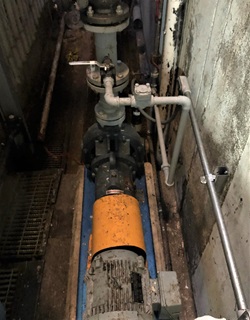Using radar for better pump control in a sticky situation
Water and oil – including vegetable oil – don’t mix. That couldn’t have been more clear for maintenance technicians at a large agroindustrial plant outside of Mexico City that produces vegetable oil. The vegetable oil goes on to be used for a variety of purposes like frying, baking, cooking, and even pharmaceutical applications.
Like most large industrial operations, this facility is required to treat its water before sending it to the local water treatment plant. At many plants like this one, the water treatment occurs at a remote location, far away from the rest of the operation. Plant managers typically take advantage of automation to treat the water with little to no human intervention, so when something goes wrong or needs maintenance, it can be a nuisance as resources are taken from the production facility and moved to the water treatment facility to fix equipment. This scenario was all too familiar at this particular plant outside Mexico City.
Pump repair costs keep adding up

Operators had been using a float with a mechanical switch to measure the level of the wastewater and control a pump to move the wastewater at this facility. Because of the oils, fats, and dirt in the wastewater, the float would get stuck and cause level measurement errors. The errors resulted in the pump continuing to run even after the water level dropped. The pump would run dry and eventually break. This was happening at least every other month and sometimes up to twice in a single month.
The expensive repairs were adding up, costing the facility thousands of dollars every month either repairing or replacing the pump. Plus, maintenance was continuously working on the same problem, and as a result, other projects were falling behind. The vegetable oil plant needed a cost-effective measurement solution they could install and set up once, so they could get back to the task at hand – making vegetable oil.
Non-contact radar measurement steers clear of the mess
The plant needed something that could either operate in these grungy conditions or make the measurement without touching the mess at all. Ultimately, they opted for staying out of the wastewater all together. They achieved that by using a VEGAPULS WL S 61, a radar sensor specifically designed for water level measurement. They output the 4…20 mA signal to the pump controller to ensure the pump would only run when water levels were high enough. The cost of the radar was less than the average cost of a single maintenance call.
Maintenance workers have a lot more time on their hands since they haven’t been making regular trips to the remotely-located water treatment facility to unstick a float or repair a pump. Plus, the plant has saved a significant amount of money with fewer pump repairs and replacements. The more reliable level measurement and pump control from the VEGAPULS WL S 61 has been well worth the initial investment many times over and in more ways than one.
Related products
Export this article
Download as PDFShare this article
Comments ({{comments.length}})
{{getCommentAuthor(comment, "Anonymous")}} {{comment.timestamp | date : "dd.MM.yyyy HH:mm" }}
{{comment.comment}}





